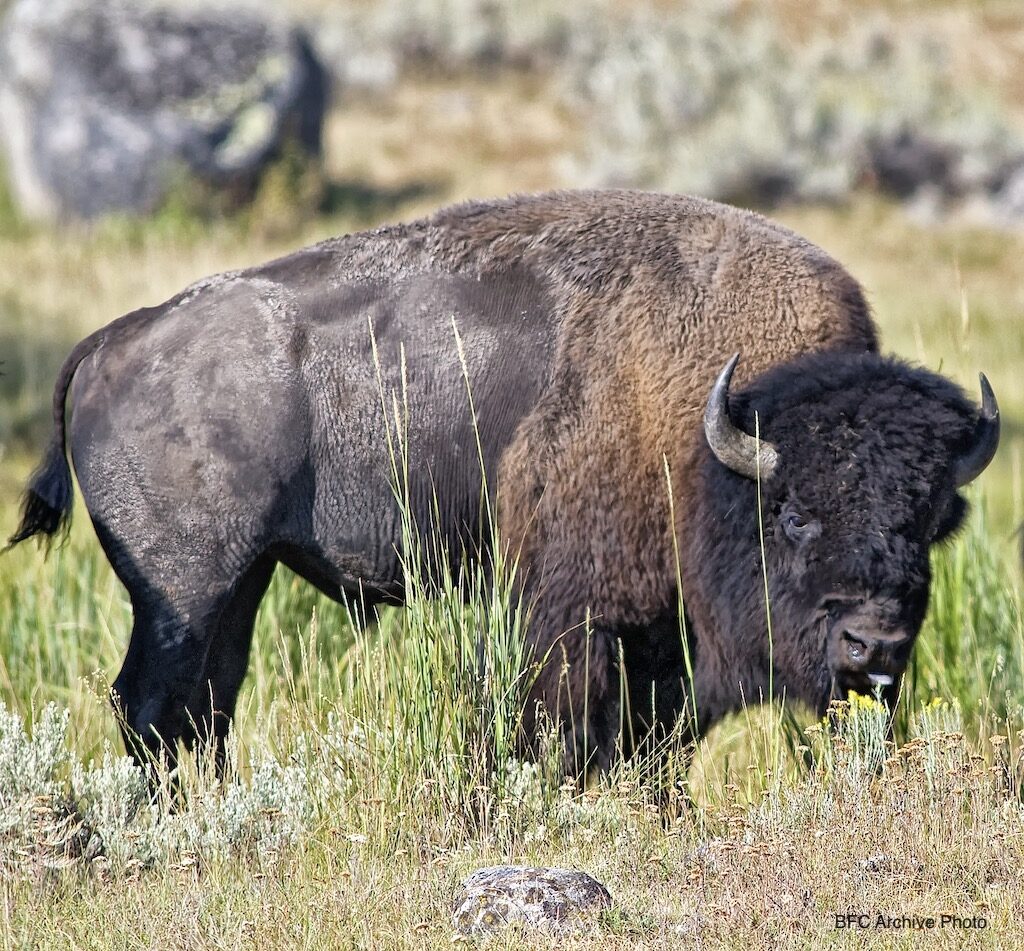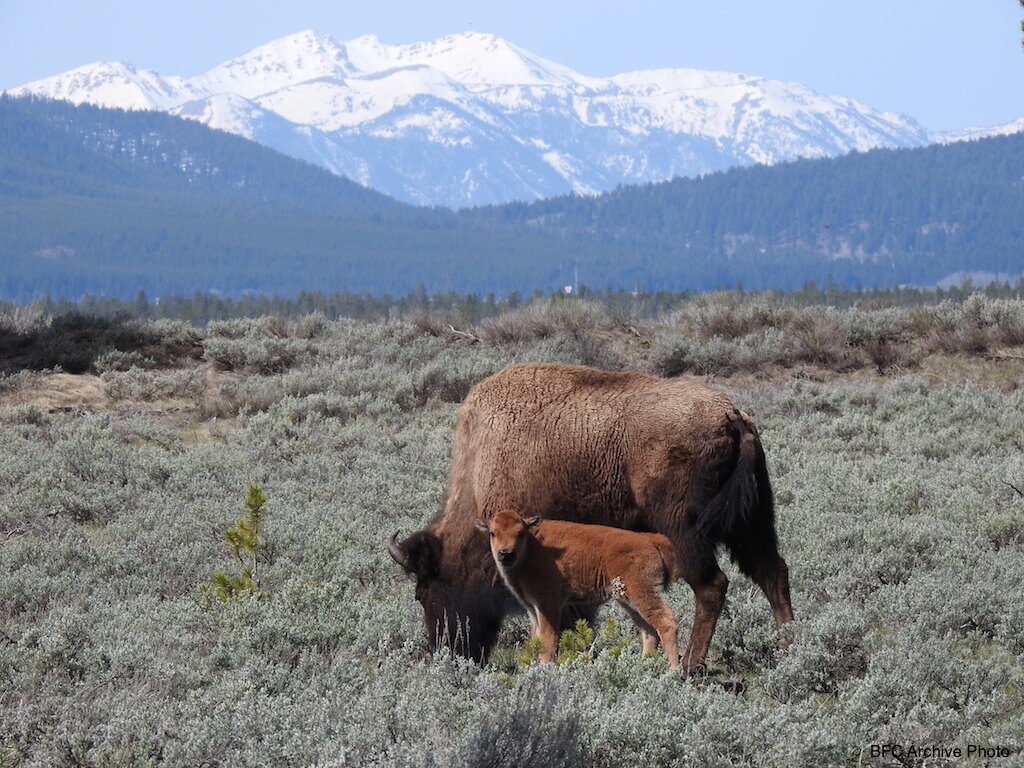Bison are a uniquely important species in North America’s past, present, and future. They are a keystone species that maintains and enhances ecological function in grassland ecosystems. Bison long supported Indigenous cultures, and their slaughter enabled the United States’ bloody conquest of the continent. The disappearance of the large herds disrupted human, plant, and wildlife communities . Today, bison continue their relationship with Indigenous communities and also inspire logos, brand names, clothing, and jewelry. The legacy of bison is not only prominent in natural history, but in human cultural history too. The focus of current and future bison restoration projects should honor this legacy by considering ecology and culture simultaneously. Supporting the repopulation of bison is the best first step to seek environmental justice for hundreds of tribes and first nations people throughout the continent. It’s an opportunity to foster economic development, enrich cultural resources, and return Indigenous-led land stewardship practices to North America.

The social, cultural, economic, and spiritual lives of Indigenous Peoples of Great Plains are inextricably linked to bison. For many millennia, bison were the primary source of food, clothing, shelter, and tools for those living on the plains. Many cultures feature bison as a central theme in cosmology and mythology. Bison imagery, symbolism, and body parts were fixtures of tribes’ ceremonial and religious life. The bison is not viewed as merely a natural resource or mundane source of livelihood, but as a sacred being and relative– “Brother Buffalo”. The intentional and systematic extermination of an estimated 30-60 million bison in the 19th century at the hands of the U.S. government and white settlers disrupted these vital life support systems for the tribes. The slaughter of the bison was an act of genocide, ecocide, and a state war crime.
The enduring economic and social consequences of the loss of the bison persist to this day, more than 150 years after the last great herds roamed the plains. The reservations of traditionally “bison reliant cultures” have up to 40% less per capita income, poorer health outcomes, and reduced economic recovery potential compared to other non-bison reliant tribes. The rapid slaughter of the bison destroyed economies, culture, and indigenous institutions at a staggering scale. The most effective and only way to pursue meaningful restorative justice for the Indigenous communities of the Great plains is to facilitate the return of bison on public, private and tribal land.

A mother and calf graze outside Yellowstone National Park
The mission of Tanka Fund, my partner organization this summer, is to return bison to native land, lives, and economies. Tanka Fund is headquartered on the Pine Ridge Indian Reservation in South Dakota, where I’m living and working for the summer. The continued importance of tatanka (bison) to the Oglala Lakota tribe is plain to see on the reservation. Many people I’ve spoken with here have a similar vision: the return of bison can bring healing and strength to overcome the pernicious challenges of colonization.
Works Cited
Feir, D., Gillezeau, R., & Jones, M. (2019). The slaughter of the bison and reversal of fortunes on the Great Plains. Center for Indian Country Development, 2019-01
Johns, E. L. (2020). Buffalo Renaissance: The Northern Plains Tribes’ Path to
Kornfeld, M., Frison, G. C., & Larson, M. L. (2016). Prehistoric hunter-gatherers of the High Plains and Rockies. Routledge
Self-Determination. Missoula, MT: University of Montana.
Moloney, C. J., & Chambliss, W. J. (2014). Slaughtering the bison, controlling Native Americans: A state crime and green criminology synthesis. Critical CriminologyPosthumus, D. C. (2016). A Lakota View of Pté Oyáte (Buffalo Nation). Bison and People on the North American Great Plains: A Deep Environmental History, 278-310

Ross Martin, Western Resource Fellow | Ross is a Masters of Environmental Management candidate at the Yale School of the Environment. His focus is on wildlife coexistence, ecosystem connectivity, environmental sociology, and the repopulation of bison in North America. Prior to graduate school, he worked in public policy, decarbonization campaigns, grassroots activism, and the conservation of wildlife in the Greater Yellowstone Ecosystem. As a Western Resource Fellow, Ross will work with Tanka Fund, a South Dakota nonprofit returning bison to native lands, lives and economies in the American West. See what Ross has been up to. | Blog
